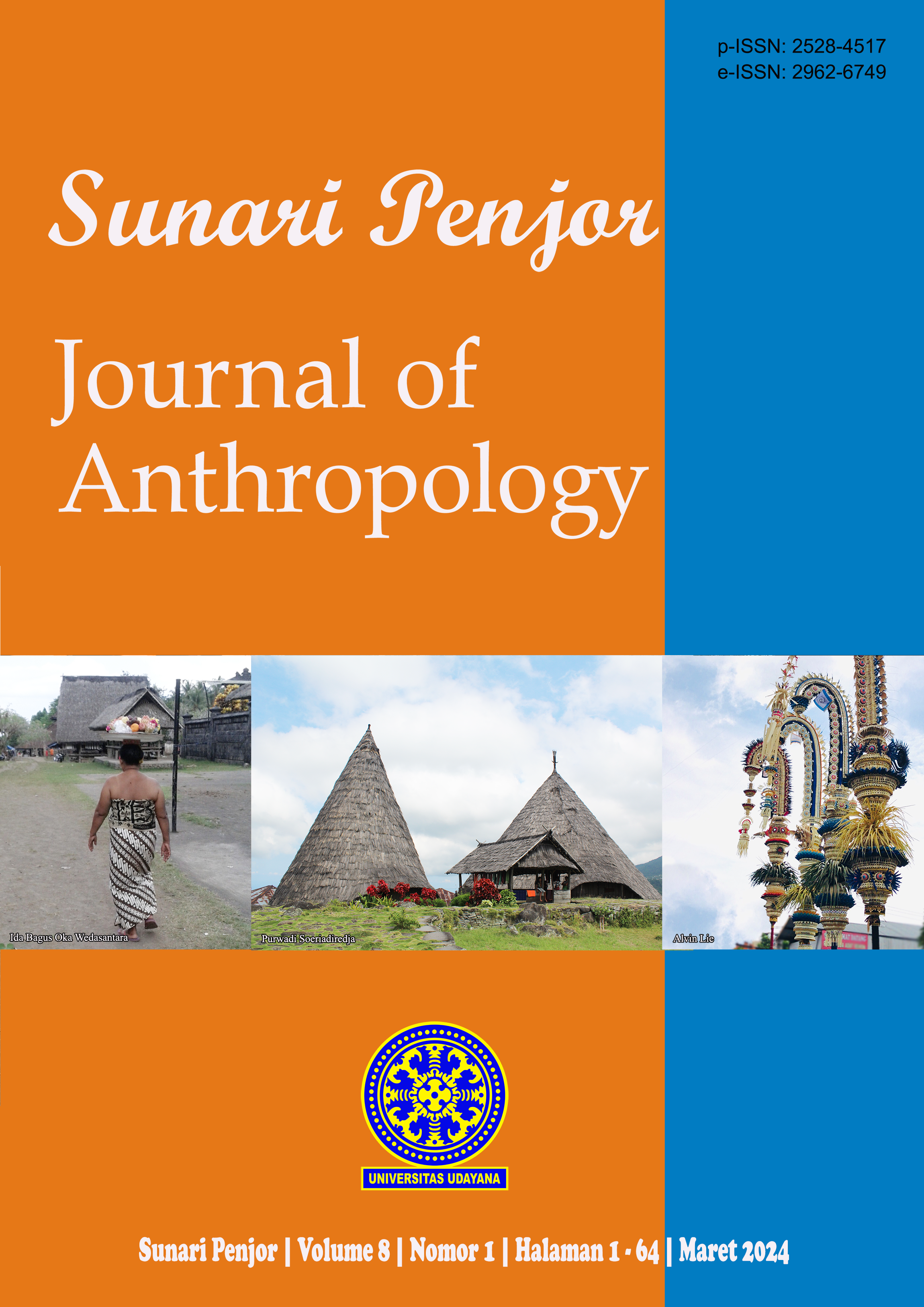Persepsi Masyarakat terhadap Mitos Larangan Nanggap Wayang dan Nggantung Gong di Desa Tulungrejo, Kecamatan Pare, Kabupaten Kediri
Abstract
The people of Tulungrejo Village believe that they are not allowed to inviting wayang and hanging the gong because this can bring disaster. The purpose of this research is to understand the reason why people still maintain these myts and to find out how people interpret the wxistence of these myths. The theory used is theory of semiotics from Charles Pierce and structural theory from Lévi-Strauss to find out the meaning of the myth of the prohibition of inviting wayang and hanging gongs in the life of the people of Tulungrejo Village. This study used a qualitative research method with an ethnographic research model through observation, interview techniques and literature study. Based on the results of the research that has been done, there are reasons why people still believe in and maintain the myth of the prohibition of inviting wayang and hanging gongs because hese myths useful values and functions for the people of Tulungrejo Village: 1) as acommunity effort to avoid unwanted disaster, 2) as a means of delivering ethics education messages, and 3) as a medium for sreading Islam.
Downloads
References
Barthes, R. (1957). Mythologis. Hill & Wang.
Christensen, P. (2008). “The “Wild West”: The Life and Death of a Myth”. Southwest Review Journal, 93(3), pp. 310-325. https://www.jstor.org/stable/43472911
Iswidayati, S. (2007). “Fungsi Mitos dalam Kehidupan Sosial Budaya Masyarakat Pendukungnya”. Jurnal Pengetahuan dan Pemikiran Seni, 2(8), pp. 180-184. https://doi.org/10.15294/harmonia.v8i2.790
Kridalaksana, H. (2001). Kamus Linguistik. Gramedia Pustaka Utama.
Lévi-Strauss, C. (1962). Structural Antrhopology. Basic Book.
Lévi-Strauss, C. (2005). Antropologi Struktural. Kreasi Wacana.
Movva, R. (2004). “Myths as a vechine for transforming organization”. Leadership & Organization Development Journal, 25(1), pp. 41-57. https://www.emerald.com/insight/content/doi/10.1108/01437730410512769/full/html
Nasrimi. (2021). “Mitos-Mitos dalam Kepercayaan Masyarakat”. Jurnal Pendidikan, Sains, dan Humaniora, 9(11), pp. 2109-2116. https://doi.org/10.32672/jsa.v9i11.3842
Sugiyono. (2006). Metode Penelitian Kuantitatif, Kualitatif, dan R&D. Alfabeta.
Sujarwa. (2001). Manusia dan Fenomena Budaya. Pustaka Belajar Offset.
Yuwita, N. (2022). “Representasi Nasionalisme dalam Film Rudy Habibie, (studi analisis Semiotika Charles Sanders Pierce). Jurnal Heritage, pp. 40-48. https://doi.org/10.35891/heritage.v6i1.1565














